To Measure the Dimensions of a Given Regular Body of Known Mass Using a Vernier Callipers and Hence Find its Density
Aim
To measure the dimensions of a given regular body of known mass using a Vernier Callipers and hence find its density.
Apparatus
Vernier callipers, a small rectangular metallic block or glass slab of known mass, magnifying lens.
Theory
(i) For measuring dimensions. Same as in Experiment 1 A.
(ii) For volume
Volume of a rectangular block = Length x Breadth x Thickness (height)
Density= Mass/Volume
i.e,.. ρ=m/V
Diagram
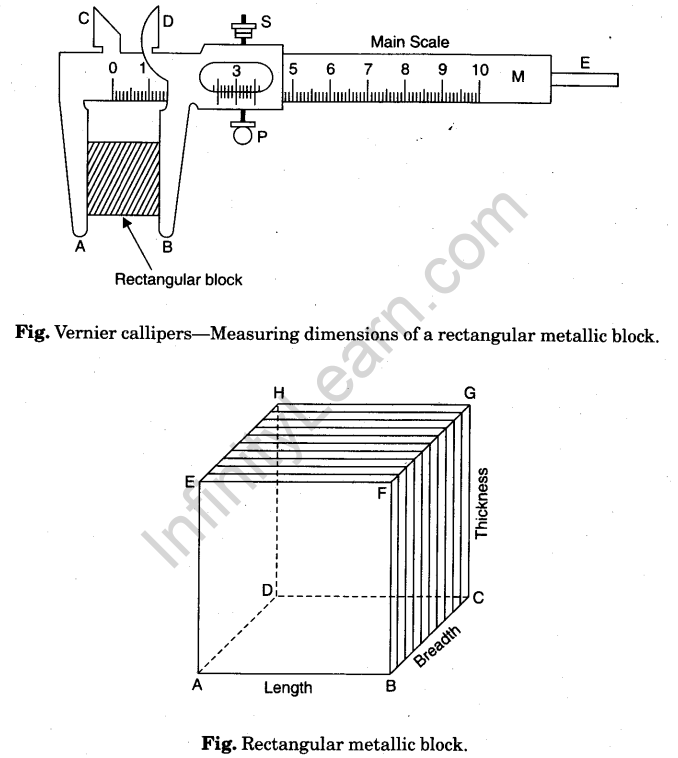
Procedure
- Proceed in similar manner as in steps 1 to 5 in Experiment 1A.
- Repeat above steps for the other edge of same face of same dimension.
- Repeat above steps for other face of same dimension.
- Repeat steps 1, 2 and 3 above for both edges of both faces of other dimensions.
- Record your observations in tabular form.
- Make calculations for each dimension applying zero correction.
- Take mean of different values of same dimension.
- Multiply the three mean dimensions to obtain volume of the block.
- Calculate the density of the block material by dividing its known mass by obtained volume.
Observations
- Known mass of the block, m =………..g.
- Determination of Vernier Constant (Least Count) of the Vernier Callipers
1 M.S.D. = 1 mm 10 V.S.D. = 9 M.S.D.
∴ 1 V.S.D. = 9/10 M.S.D. = 0.9 mm.
Vernier constant, V.C. = 1 M.S.D. – 1 V.S.D. = (1 – 0.9) mm = 0.1 mm = 0.01 cm - Zero error = (i)…….cm, (ii)……… cm, (iii)………cm.
Mean zero error (e) =……… cm
Mean zero correction (c) = – e =………cm. - Table for the length (l)
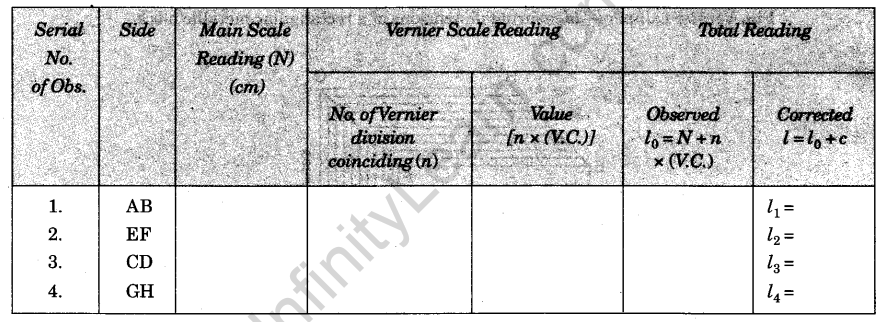
- Table for the breadth (b)
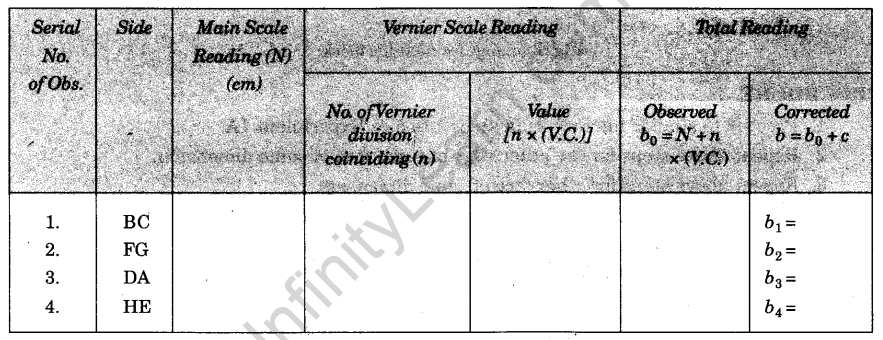
- Table for the thickness (t)
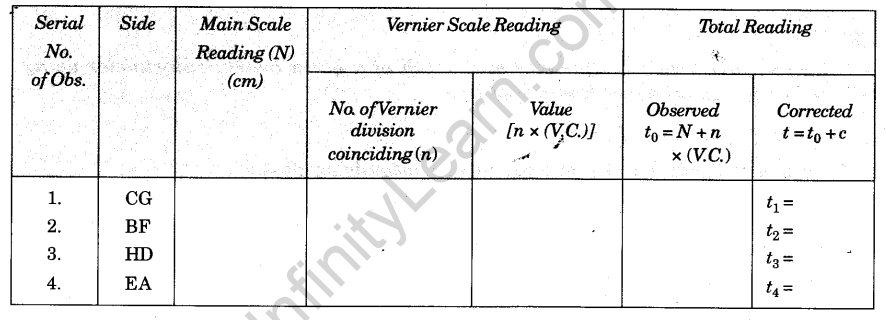
Calculations
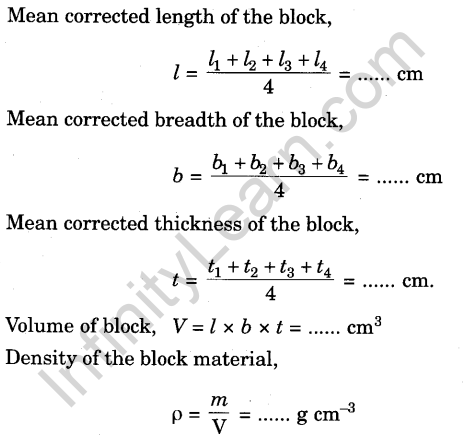
Result
Density of block material = ………g cm-3
Precautions
Same as given in Experiment 1A.
Sources of error
Same as given in Experiment 1A.




